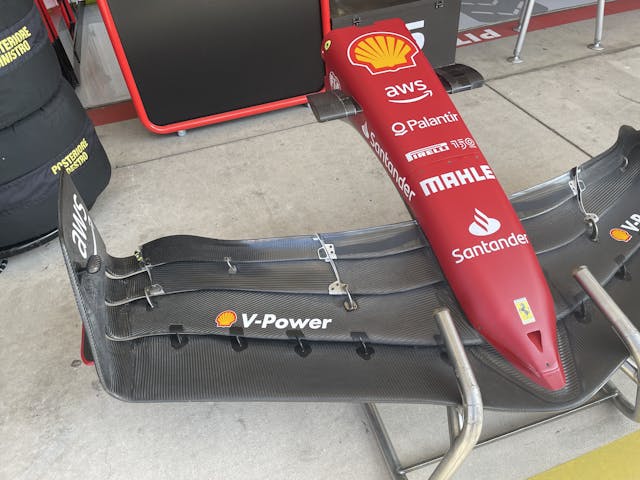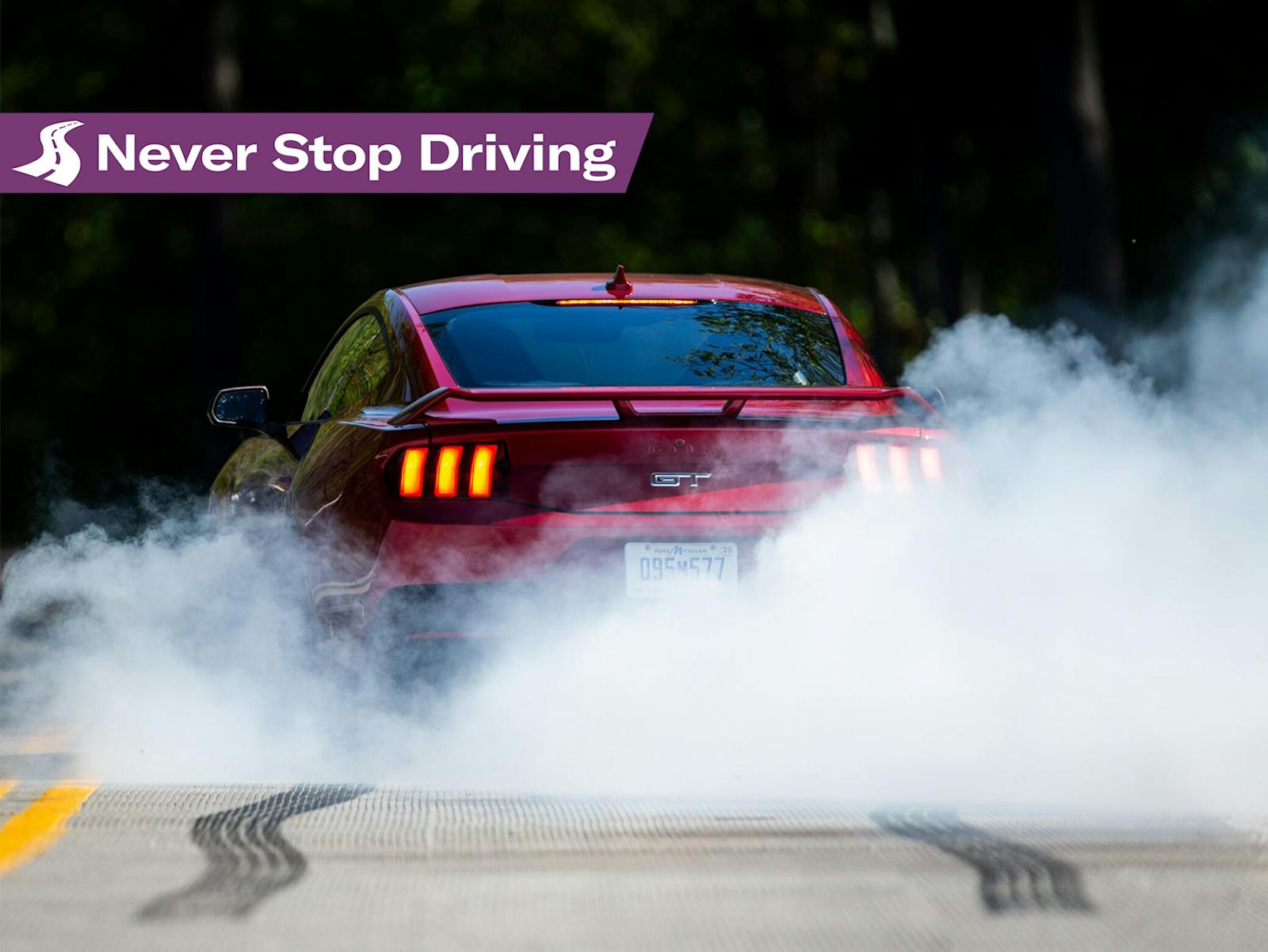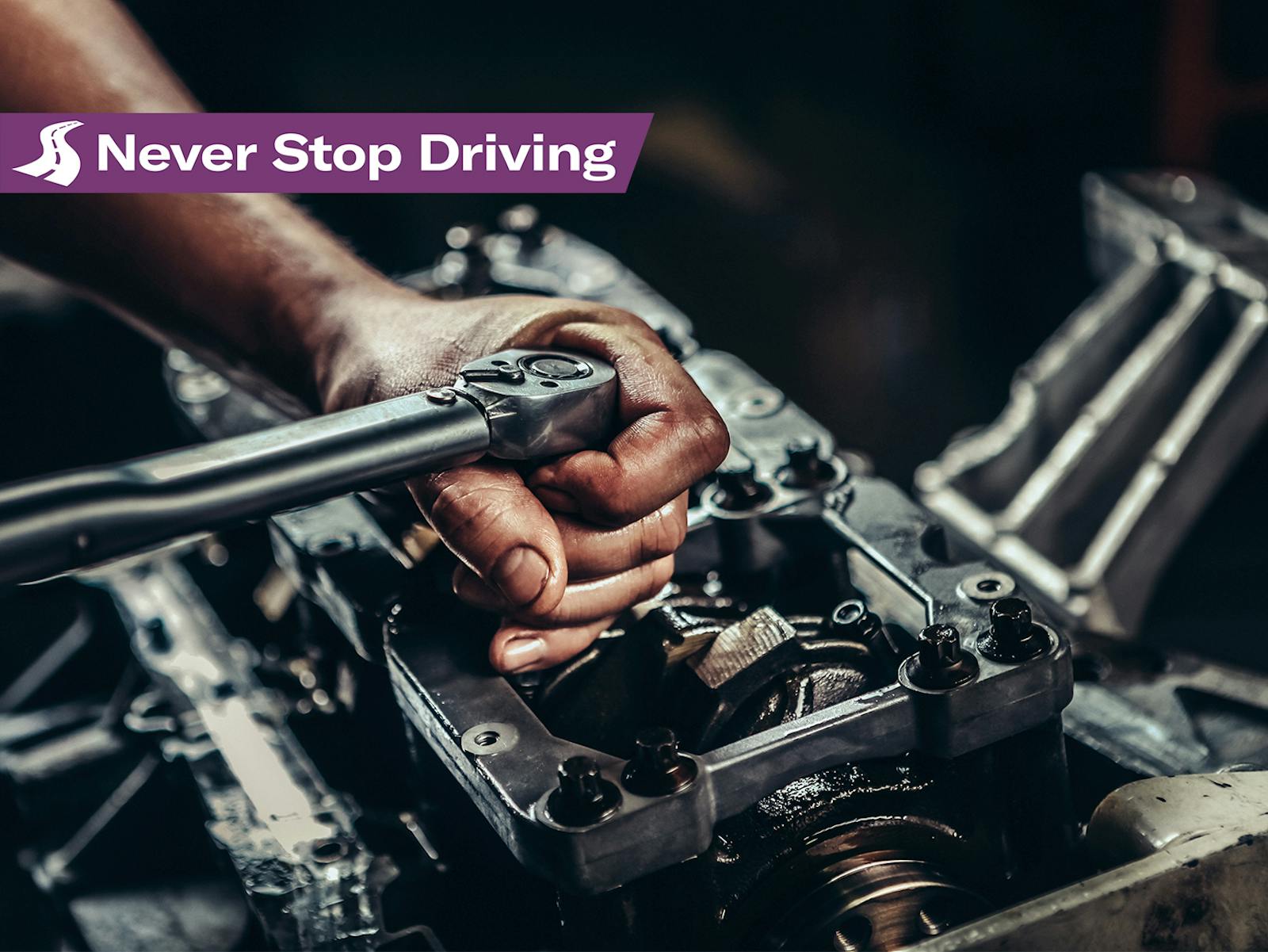Never Stop Driving #24: American F1 Fever
An estimated 440,000 people attended this past weekend’s Formula One race in Austin, Texas. That figure is nearly half of the population of the Texas capitol. The local news reported that general tickets holders started lining up at 3AM Sunday morning to claim the best viewing spots. I was there and saw thick crowds with traffic to match. That outcome is worth celebrating because it means more and more people are recognizing what we’ve long known: cars, speed, and driving are awesome.
I first attended the U.S. Grand Prix in 2012, when I was editor of Road & Track. It was for the hastily built Circuit of the Americas, and the big question on everyone’s mind was whether the resurrection of F1 in the United States would “take.” It did, at least in terms of the Texas event, which notably drew fans from Mexico and other parts of Central America, as well as F1 loyalists from states near and far. Since then, the surge in interest in F1 has been remarkable, no doubt majorly boosted by the compelling Netflix series Formula 1: Drive to Survive. Back in 2012, I was frustrated when I strolled the brand-new pits at COTA, because I had a bazillion questions about the most advanced cars on the planet yet no one from any of the teams would tell me a thing. F1 teams spend tens of millions developing technological advantages and are tighter lipped than the Pentagon.
This time, I attended the race with Pirelli, which supplies the tires to all the F1 teams. For an F1 car, the tires are as important as the engine, perhaps more so, because the entire car is built for the road and the only connection is via the tire. Therefore, the company has a main seat at the F1 table and I hoped that by joining Pirelli’s hospitality trip, I’d at least get to indulge my curiosity about tires and maybe more.
I’ve long had a mild obsession with tires because I experienced how much they improve year over year. In 1995, when I started at Car and Driver as a test driver, tires designed for everyday passenger cars (and not for racing) often shedded rubber chunks during cornering tests. Some 15 years later, doing the same tests produced better results without the extreme wear. To the eye, the new tires were black and round like always, yet the chemical makeup and construction incrementally improved enough that I noticed.
Since the tire connects the car to the road, it also has a primary role in how a car feels to the driver. That’s one reason you often read about how car manufacturers work with tire companies to design custom tires for their cars. I’ve tested hundreds of tires and have experienced the differences, which can be profound. That feel, by the way, is critical in motorsports because a more confident driver is more likely to extract a car’s maximum performance. That confidence starts with the tire.
Pirelli brought 1800 tires to Austin and a flotilla of equipment and people to mount and balance them. The teams can choose between three different tires that vary in grip and wear. They base their race strategy around when and how often to pit for new tires. If you watch F1 races on the tube, you’ll often hear the commenters talk about how one driver might be either pushing hard and potentially overheating the tires or hanging back to preserve the rubber for a passing maneuver later.

Are the tires that delicate, I asked Mario Isola, Pirelli’s Motorsport director.
His answer was wonderfully geeky. Every tire has a temperature where it generates the most grip, or stick, to the pavement. For an F1 tire, it’s about 250 degrees. If the tire is above or below that temperature, grip falls and lap times rise. The teams obsess over tire temperature to remain within one percent of maximum grip. Isola says that over one lap, the performance difference between that one percent range and two is several tenths of a second. At last weekend’s F1 race, the top three qualifying times were within one tenth of a second. Tire temperature is critical.
So how do the teams know the temperature? Teams use infrared sensors, one mounted inside the wheel and another on the front wing, to measure the temperature on the inside and outside of the tire. They then calculate an estimate of the internal temperature, which is the most meaningful figure. The driver plays a role here too, warming the tires during a lap to get them in the zone for the qualifying run. If you think about the complexity here for just the tires and apply that to every facet of the car, it’s no wonder F1 team budgets top $100 million.

Now what, you might ask, does all this have to do with the tires Pirelli sells? This year F1 made a big shift from archaic 13-inch-diameter wheels to use 18s. That move aligns with sizes that are on today’s cars. Isola says that Pirelli uploads a treasure of data every race from some 115 sensors on the car, which it uses to continually refine the computer models it uses to design all its tires. Racing tires see extremes like 10 psi pressure swings, some 2500 pounds from downforce-generating aerodynamics and there’s the continual driver feedback. Pirelli, Isola says, learns at a pace that’s unusual in most corporate life, driven by teams obsessing over everything. The sport quickly trains engineers too. F1 does not suffer fools. Have you met the intense Mercedes F1 team boss, Toto Wolff?
Around my half hour with Isola, I learned that the F1 circus is a sea of velvet ropes and incredibly choreographed activities, most available in packages that cost thousands. The U.S. company Liberty Media purchased F1 in 2016 for $4.4 billion and judging by the legions waiting for not just bleachers seats but the premium experiences, the company appears adept at making that investment pay off. You can walk the pit lane, get a ride at speed around the track and also tour the track in a trailer pulled by a semi like a hayride. The only place off limits is the garages, although I did see the impossible-to-miss Shaquille O’Neal walking back there. An army of chipper young and thin young adults, most with British accents, somehow kept the throngs moving. It was a thing to watch.

The race did not disappoint. Ferrari driver Carlos Sainz flubbed the standing start and let newly-crowned champ Max Verstappen glide into first place by turn one. Sainz was further punished by Mercedes driver George Russel, who promptly speared Sainz in the melee, ending Sainz’s day. There was more drama when Fernando Alonso ran into the back of Lance Stroll and went airborne. Stroll was out, but Alonso, the oldest driver in the race at 41, soldiered on to finish 15th.
Verstappen’s seemingly easy run to the win was nearly thwarted during an uncharacteristically long Red Bull pit stop. I happened to be in the back of the Red Bull garage at that moment touring a closet where an ExxonMobil chemist runs a lap that continually tests all the fluids in the cars. Yes, they have their own lab with a spectrometer, beakers, and other devices I can’t pronounce. The woman in the closet helps inform, for example, on the condition of the engine based on the trace metals in the oil. Which metals and how much? That’s of course confidential, but the exercise is a perfect illustration of F1 intensity. Or madness.
Verstappen, a generational talent at the top of his game and in the best car, recovered to win. I’ve loved F1 for decades and assumed it would remain a niche interest to my fellow Americans. It’s now mainstream and I’m thrilled. F1 will race three times in the U.S. next year. Here’s hoping I can return and ask more questions.
Have a great weekend!
Hear from me every Friday by subscribing to this newsletter.


“F1 does not suffer fools. ” Apparently, you haven’t been paying much attention to the officiating. The Stewards have been terrible over the last few seasons, with this season being one of the worst. They are extremely inconsistent with penalties, quote rules incorrectly to the teams, and generally look like the Keystone Kops.
I was thinking about the teams when I wrote that. Point taken….
A good read, I have been. Fan of F1 since the 80’s, and it is the combination of tech, engineering, strategy, and drivers ability that has kept my interest for years. Thanks
“F1 does not suffer fools.” Apparently you haven’t paid attention to the terrible officiating over the past few years. You’d thing the “pinnacle of motorsports” could hire stewards who are capable of reading and understanding the rule book and applying penalties in a fair and consistent manner. Instead. you have the Keystone Kops, using twisted logic to avoid penalties they don’t want to give, officials giving teams the wrong information about rules, and generally looking like they haven’t a clue.
Truly exhilarating.
Recall the F1 days on the streets of downtown Detroit. Remember walking the pits and getting scald looks from the pit crews trying to protect their secrets.
A Sweet sound of screaming engines bouncing off high-rise buildings. Please come back to the Motor City.
This column is by far the best in recent memory, and not a mention of autonomous cars (at last)!
Great to see the crowd turnout for the event. Larry, you are a lucky guy to be able to attend. I am sure though it is “work”, most people think it is all “play”. I ran an event facility and people used to see me only on the weekend and would comment, “Oh, it must be nice to only work during the weekend”, and I would say, “Yeah, and Monday through Friday as well”. They thought well you are only “working” then, what about booking shows, cleaning, ordering supplies, maintenance, etc… the list goes on. However, I assume just like you, I enjoyed my job, but there are times it still is “work”.
Great insightful, coverage of the Austin race Larry. Your mention of R&T reminded me of how I first got interested in F1. It was the fascinating coverage in R&T by Henry N. Manning III (hope I remembered his name correctly) who left one feeling they had been at the race. I hope you will continue to write about your subsequent F1 experiences next year.
Yeah, RT was magic during the early F1 days.
I had given up on Formula 1 for the past 15 year or so: boring races, ugly flat-bottom cars on roller-skate wheels, and teams like Force India and Marussa that sparked no interest. That started changing with Liberty Media’s ownership, and the new ground effects cars have created closer competition and are quite beautiful again. F1 has a way to go, including the FIA’s perpetual idiocy and nanny-state DRS rules (give them push-to-pass like IndyCar, please), but I’m back and loving it again. Now if Ferrari could find some competent leadership…
Yeah 100%!, I have become an F1 enthusiast since I watched the “Drive to Survive” series. Getting to know the teams, feeling the thrill of it all. Especially the history of Williams Racing!
I’ve had the pleasure of attending the Canadian GP in Montreal several times and it’s always an amazing event. Even the best surround sound systems can’t replicate the noise (nor the feeling) as the sounds of those cars literally vibrates through you. Truly a special place to be for any racing enthusiast.
I was surprised that they sent out a couple of V-10 F1 cars, the howling screaming ones from a bygone era. They reminded me of what we are now missing as the news sounds flat to my ears.
Really great read. So insightful and interesting. Thank you!
Larry, yes, keep returning to dig more into the behind the scenes. Like you, I’ve been a long time F1 fan, and knew that the teams measured everything…it’s very interesting though to actually learn how they do it.
“ where an ExxonMobil chemist runs a lap” should be “lab”, but otherwise enjoyable read. I definitely hope to make it out there one day.
Dang…Appreciate the catch!
Very good column, Larry; one of your best. There is no substitute for a day at the racetrack! F1 has been and still is the very top of the mountain.
Archaic 13″ rims ? Better than those ugly 18″ clown shoe rims with wheel covers. Seen better looking rims on school busses. I started going to Watkins Glen when I was teenager. Then Montreal in the 1990’s. The technology is still interesting to me. However, the regulations, oversized cars, huge front wings that get broken on the first turn on the first lap, inconstant officiating, V6, etc, has led me to a TV watcher only. And that is only the tip of the iceberg. The last F1 car that interested me AND got me to go in person is the McLaren MP/4-6 with the Honda RA121E driven by someone named Senna. In the wet practices, at Montreal was a sight to see and experience. Now I attend vintage racing, IMSA, and an occasional Indy Car race for the tight fields. I have left F1 attendance for the younger fans. And yes, once upon a time I waited for R & T to read F1 articles.
Decent article Larry. But more for the DTS crowd.
LOL, you mean the drinking crowd?